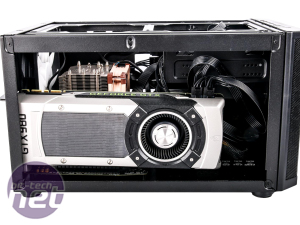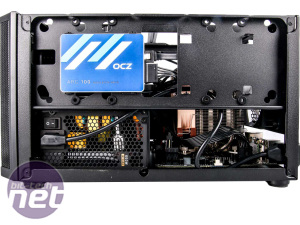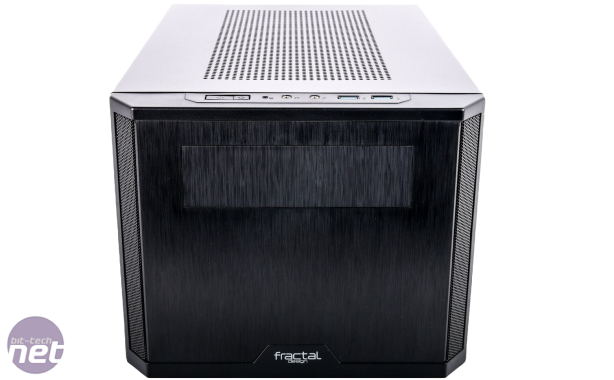
Performance Analysis
While the case's rear exhaust fan doesn't have the ideal alignment with our Noctua NH-U9s cooler, this didn't stop the Core 500 bettering the Phanteks Enthoo EVOLV ITX and Raijintek Styx by some considerable margins, most likely helped by the ample number of vents in the case too, aiding the negative air pressure design imposed by the single 140mm rear exhaust fan. The GPU temperature was even more impressive. With a delta T of just 46°C, it was just 2°C warmer than having the same system on an open test bench, and 6°C cooler than the Phanteks Enthoo EVOLV ITX.Click to enlarge
We've seen the same result in similar cases too - placing the GPU cooling fan right next to a vent in the side panel is very often the best way of cooling it - even better, usually, than locating it in a larger case with a bunch of intake fans. The result is the same though - even as an air-cooled case, the Core 500 is more than up to the task of dealing with an overclocked CPU and high-end graphics card. Thankfully the included fan was quiet nnoticeable above the din of the rest of the hardware - but also shifted a noticeable amount of air.
Click to enlarge
Conclusion
Apart from a couple of niggles - most notably the rather interconnected roof fan mount that can hamper radiator and fan installation, the Core 500 is a superb mini-ITX case. As well as the super-low price tag, it's adept at both air and water-cooling and the fact you can house both 170mm-tall tower coolers or a double 140mm-fan radiator is remarkable in such a small case. There's not a lot of cable routing on offer and it's a rather cramped case to work with, but if you want a high-end rig in as small a space as possible with the option of throwing in some decent liquid cooling too, the Core 500 is an excellent choice.
-
Cooling26 / 30
-
Features17 / 20
-
Design26 / 30
-
Value19 / 20


MSI MPG Velox 100R Chassis Review
October 14 2021 | 15:04











Want to comment? Please log in.